Pályázatok Szakmai beszámoló – 2021.09.30.
A projekt címe magyar nyelven: A helyspecifikus mezőgazdálkodás gazdasági és technológiai előnyeinek kiaknázása kukorica kultúrában változó ökológiai és ökonómiai feltételek mellett
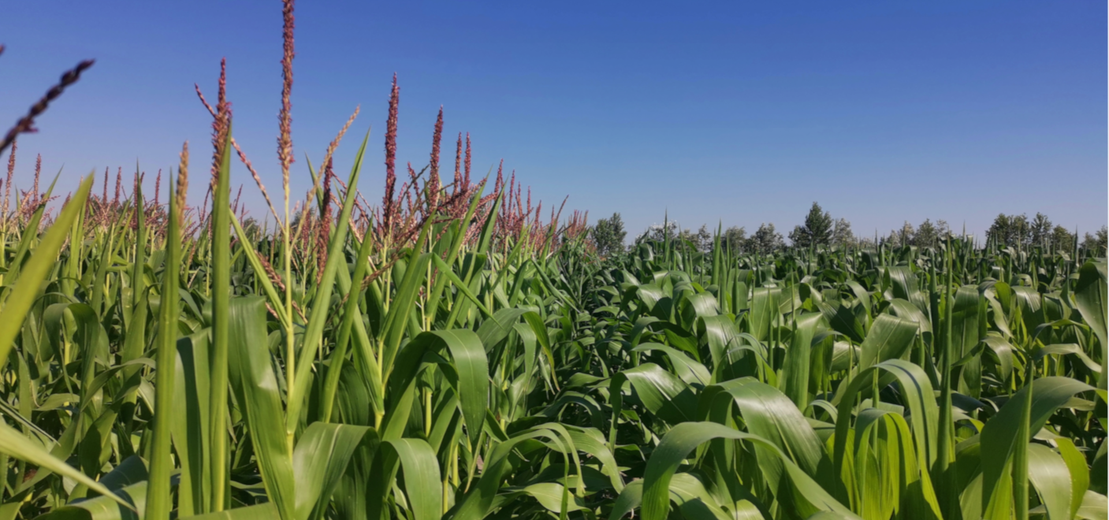
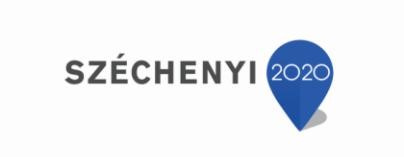
Támogatói okirat: 3023534260
A projekt címe angol nyelven
Utilisation of economical and tehnological benefits of the site specific agricultural corn-production in an ecologically and economically changing environment
A projekt megvalósításának földrajzi elhelyezkedése
Nyugat-Magyarország (Győr-Moson-Sopron), Dél-Dunántúl (Tolna), Dél-Alföld (Csongrád), (régió, megye)
Konzorcium vezető - a projekt vezetője a konzorciumi megállapodásban foglaltak szerint (név, cím, e-mail, telefonszám)
| Konzorciumvezető | Tag típusa |
| Agrofil-SZMI Kft. | kutatóhely, konzorcium vezető |
Az operatív csoport tagjainak elérhetősége
| Konzorciumi tag | Tag típusa |
| Agrofil-SZMI Kft. | kutatóhely, konzorcium vezető, projekt vezető |
| Vásárhelyi Róna Kft. | mezőgazdasági termelő |
| Hartai Gazdák Szövetkezete | termelői csoport |
| Kövécs Kft. | mezőgazdasági termelő |
| Kövécs Tamás | mezőgazdasági termelő |
| Cseke László | mezőgazdasági termelő |
| Bonta Kft. | mezőgazdasági termelő |
| Ifj. Németh Gergely | mezőgazdasági termelő |
| Lajos Katalin | mezőgazdasági termelő |
| Dr. Szabados Tamás PhD | tanácsadó |
Kulcsszavak
tápanyag-utánpótlás és tápanyag-gazdálkodás, precíziós gazdálkodás, helyspecifikus gazdálkodás, agrárinformatika, szántóföldi növénytermesztés
A projekt időtartama
2019.07.01.-2023.09.30.
A projekt státusza
folyamatban lévő, 2. mérföldkő vége
A projekt fő finanszírozási forrása
Vidékfejlesztési Program, saját forrás
A projekt teljes költségvetése
657 433 eFt
A projekt célja angol és magyar nyelven
A projekt célja egy döntéstámogató rendszer létrehozása, amely a szántóföldi növénytermesztési tevékenység során lehetőséget biztosít az input-anyagok felhasználásának optimalizálására, lehetőség szerint csökkentésére.
The objective of the project is to create a decision support system, that offers opportunities for optimising, possibly reducing the use of inputs of arable farming.
Rövid összefoglaló a gyakorlati szereplők számára angol és magyar nyelven
A gazdálkodás jövedelme, amelyért a gazdálkodók is dolgoznak, tekintsük bármely szektort és a mezőgazdaság bármely ágazatát, a bevételek és kiadások különbözete. A bevételeket a megtermelt mennyiség, illetve az adott termény egységára, a kiadásokat pedig a gazdálkodás során felhasznált erőforrások mennyisége és azok egységára határozza meg. A gazdálkodók a szántóföldi termények esetében sem az input-anyagok, sem a megtermelt termények árára jelentős hatást nem tudnak gyakorolni, emiatt a jövedelmezőségüket a termelt áru-mennyiség, illetve a felhasznált input-anyagok mennyiségének optimalizálásával tudják javítani. Projektünkben az input-anyag mennyiség optimalizálásának problémakörét célozzuk, a helyspecifikus gazdálkodás eszközrendszerén keresztül.
The profit of operation of a farm is, concerning any sector, the difference between the income and the costs. The income is influenced by the produced quantity and the unit-purchase-price, while the costs depend on the amount of the used inputs and their specific price. Farmers have no significant influence neither on the input nor on the purchase price, therefore the amount of their product and the amount of the applied inputs remain in their hands as a mean of influencing their profit. We target the issues of optimising the inputs’ use, through the means of the precision agriculture.
Szakmai beszámoló
A 2. mérföldkő végére a kísérleti táblák mindegyikén elvégeztük a talajszkennelést, mellyel felvételeztük a talaj nem változó tulajdonságait és megállapítottuk, rögzítettük a talajművelési, tápanyag-visszapótlási és tőszámbeállítási algoritmusaink talajra jellemző input-adatait.
A konzorcium 8 fő mezőgazdasági termelő tagjainál beállítottuk kukoricában és napraforgóban tőszámra és tápanyag-visszapótlásra vonatkozó kísérleteket, illetve beállítottuk a talajszkennelés adataira alapozva a talajművelés kísérleteket a megfelelő, helyspecifikus művelési mélység megállapítási módszertanának kidolgozása érdekében. Már minden konzorciumi tag rendelkezik a helyspecifikus gazdálkodásra alkalmas berendezéssel, a hiányzó darabokat vásárolták meg az első mérföldkő alatt. Az ezekből származó adatokat begyűjtöttük, a mindenkori munkára jellemző rendszerességgel, de legalább hetente 1 alkalommal. Elemeztük azok formátumát, illetve megvizsgáltuk, hogyan lehet ezeket feldolgozni, információvá alakítani.
Konferenciát (4 helyszínen, 4 időpontban) tartottunk az összegyűjtött tapasztalatok, ismeretek megosztása érdekében.
Mind a 8 konzorciumi tagnál sikerült a változó mélységű talajművelési kísérletekben rögzíteni az üzemanyag-fogyasztási adatokat, a későbbi betakarítási adatokhoz kijelölni a területeket. Napraforgó és kukorica kultúrákban beállított tápanyag-visszapótlási és tőszám kísérletek betakarításra várnak. Várhatóan október-novemberben kerülnek az utolsó parcellák is betakarításra, majd ezen eredmények feldolgozásra.
Egyéb információk a projektről
A projekt eredmény megosztásának eszközei a kommunikációs terv szerint
Az innovációs projektet feltöltöttük az EIP-AGRI Service Point honlapra. Konferenciát tartottunk.
Püski, 2021.10.14.

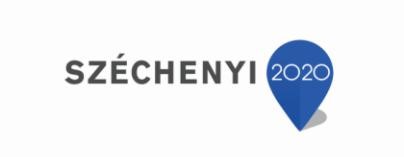
Professional report – 30.09.2021
Document of support: 3023534260
Title of the project
Utilisation of economic and technological benefits of the site-specific agricultural corn-production in an ecologically and economically changing environment
Geographical placement of the project implementation
West Hungary (Gyor-Moson-Sopron), South Transdanubia (Tolna), South of The Great Plain (Csongrad), (region, county)
Leader of the consortium – the leader of the project, based on the consortium agreement (name, address, e-mail, phone)
| Consortium leader | Member type |
| Agrofil-SZMI Kft | research organization, consortium leader |
Members of the operative group
| Consortium member | Member type |
| Agrofil-SZMI Kft. | research organization, consortium leader, project leader |
| Vásárhelyi Róna Kft. | farmer |
| Hartai Gazdák Szövetkezete | farmers group |
| Kövécs Kft. | farmer |
| Kövécs Tamás | farmer |
| Cseke László | farmer |
| Bonta Kft. | farmer |
| Ifj. Németh Gergely | farmer |
| Lajos Katalin | farmer |
| Dr. Szabados Tamás PhD | consultant |
Key words
fertilization and plant nutrition management, precision agriculture, site-specific farming, agricultural informatics, field crop growing
Period of the project
01.07.2019 – 30.09.2023
State of the project
in progress, end of the 2nd milestone
Main financing sources of the project
Rural Development Programme, own source
Whole budget of the project
657 433 thousand Forints
Aim of the project
The objective of the project is to create a decision support system, that offers opportunities for optimising, possibly reducing the use of inputs of arable farming.
Short summary for the operational members
The profit of operation of a farm is, concerning any sector, the difference between the income and the costs. The income is influenced by the produced quantity and the unit-purchase-price, while the costs depend on the amount of the used inputs and their specific price. Farmers have no significant influence neither on the input nor on the purchase price, therefore the amount of their product and the amount of the applied inputs remain in their hands as a mean of influencing their profit. We target the issues of optimising the inputs’ use, through the means of the precision agriculture.
Professional report
For the end of the 2nd milestone soil scanning is done on every trial field with which the nonchanging properties of the soil are determined and soil specific tillage, nutrient replenishment and our seeding rate algorithms input data are determined and recorded.
Trials were established at the 8 main farmers fields in corn and sunflower for seed rate and nutrient replenishment and trials are established to determine the adequate site-specific depth tillage methodology based on the data of soil scanning. Every consortium member has the tools needed for site specific farming, because they already purchased them until the 1st milestone. Data from them are collected with the regularity needed for each works, but minimum 1 time weekly. We have analysed their formats and examined how they can be converted into information. Conferences were organised (4 places, 4 timings) to share the knowledge and experience.
Every 8 consortium members could record fuel consumption data in case of variable depth tillage trials, and the areas for harvest data are marked out. Sunflower and corn trials on seed rate and nutrient replenishment are waiting for harvest. Expectedly the last plots of these trials will be harvested and the data will be processed after harvest in October-November.
Further information on the project
Tools of the project result sharing based on the communication plan
Innovation project is uploaded to EIP-AGRI Service Point webpage. Conference was organised.
Püski, 14.10.2021

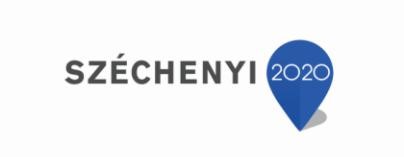
Fachbericht – 30. 09. 2021
Beleg Nr.: 3023534260
Der Titel des Projekts
Nutzung der wirtschaftlichen und technologischen Vorteile des standortgerechten Anbaus im Maisanbau unter veränderten ökologischen und ökonomischen Bedingungen
Geografischer Standort der Projektumsetzung
Westungarn (Győr-Moson-Sopron), Südtransdanubien (Tolna), Südliche Tiefebene (Csongrád), (Region, Komitat)
Konsortiumsleiter – der Projektleiter gemäß den Bestimmungen der Konsortialvereinbarung (Name, Adresse, E-Mail, Telefonnummer)
| Konsortiumsleiter | Typ des Mitglieds |
| Agrofil-SZMI Kft. | Forschungsstandort, Konsortialleiter |
Verfügbarkeit operativer Gruppenmitglieder
| Konsortiumsmitglied | Mitgliedstyp |
| Agrofil-SZMI Kft. | Forschungsstandort, Konsortialführer, Projektleiter |
| Vásárhelyi Róna Kft. | Agrarproduzent |
| Hartai Gazdák Szövetkezete | Cooperative |
| Kövécs Kft. | Agrarproduzent |
| Kövécs Tamás | Agrarproduzent |
| Cseke László | Agrarproduzent |
| Bonta Kft. | Agrarproduzent |
| Ifj. Németh Gergely | Agrarproduzent |
| Lajos Katalin | Agrarproduzent |
| Dr. Szabados Tamás PhD | Berater |
Schlüsselwörter
Nährstoffversorgung und Nährstoffmanagement, Präzisionslandwirtschaft, standortspezifische Landwirtschaft, Agrarinformatik, Feldfruchtbau
Dauer des Projekts
01.07.2019-30.09.2023
Projekt-Status
fortlaufend, Ende von Meilenstein 2
Die Hauptfinanzierungsquelle des Projekts
Programm zur Entwicklung des ländlichen Raums, eigene Mittel
Das Gesamtbudget des Projekts
657.433 tausend HUF
Der Ziel des Projekts liegt
Der Ziel des Projekts ist die Schaffung eines Entscheidungsunterstützungssystems, das Möglichkeiten zur Optimierung bzw. Reduzierung des Einsatzes von Betriebsmitteln des Ackerbaus bietet.
Kurze Zusammenfassung für Praktiker
Das Einkommen der Landwirtschaft, für die auch Landwirte arbeiten, berücksichtigt in jedem Sektor und in jedem Zweig der Landwirtschaft die Differenz zwischen Einnahmen und Ausgaben. Die Einnahmen werden durch die produzierte Menge oder die Einheit der jeweiligen Kulturpflanze bestimmt, während die Ausgaben durch die Menge der während der Landwirtschaft verwendeten Ressourcen und deren Einheit bestimmt werden. Bei Ackerkulturen können Landwirte keinen nennenswerten Einfluss auf den Preis der Einsatzstoffe oder der erzeugten Nutzpflanzen nehmen, so dass sie ihre Rentabilität durch die Optimierung der Menge der produzierten Güter und der Menge der eingesetzten Einsatzstoffe verbessern können. In unserem Projekt zielen wir auf das Problem der Optimierung der Inputmaterialmenge durch das Werkzeugsystem der standortspezifischen Bewirtschaftung.
Professioneller Bericht
Bis zum Ende des 2. Meilensteins führten wir auf jedem der Versuchsfelder ein Bodenscanning durch, mit dem wir die sich nicht verändernden Eigenschaften des Bodens erfassten und die bodenspezifischen Inputdaten unserer Bodenbearbeitung, Nährstoffnachführung und Anlage ermittelten und aufzeichneten Algorithmen zur Zahlenanpassung.
Bei den acht Konsortiumpartners, die Agrarproduzenten sind, führten wir Experimente zur Anzahl der Pflanzen und zur Nährstoffauffüllung in Mais und Sonnenblumen durch und führten Bodenbearbeitungsexperimente auf der Grundlage von Bodenscandaten durch, um eine Methodik zur Bestimmung der geeigneten Nährstoffe zu entwickeln, standortspezifische Bearbeitungstiefe. Alle Konsortiumsmitglieder verfügen bereits über für die standortspezifische Landwirtschaft geeignete Ausrüstung, die fehlenden Teile wurden im Rahmen des ersten Meilensteins angeschafft. Die Daten daraus haben wir in der für die aktuelle Arbeit typischen Regelmäßigkeit, mindestens jedoch einmal pro Woche, erhoben. Wir haben ihr Format analysiert und untersucht, wie sie verarbeitet und in Informationen umgewandelt werden können.
Wir veranstalteten eine Konferenz (an 4 Standorten, zu 4 Zeitpunkten), um die gesammelten Erfahrungen und Kenntnisse auszutauschen.
Für alle 8 Konsortialmitglieder war es möglich, die Kraftstoffverbrauchsdaten in den Bodenbearbeitungsversuchen mit variabler Bodentiefe zu erfassen und die Flächen für die späteren Erntedaten festzulegen. Experimente zur Nährstoffauffüllung und Samenanzahl in Sonnenblumen- und Maiskulturen warten auf die Ernte. Es wird erwartet, dass die letzten Parzellen im Oktober-November geerntet werden und diese Ergebnisse dann verarbeitet werden.
Die Möglichkeit, die Ergebnisse des Projekts gemäß dem Kommunikationsplan zu teilen
Das Innovationsprojekt wurde auf die Website des EIP-AGRI Service Point hochgeladen. Wir hatten eine Konferenz.
Püski, 14.10.2021

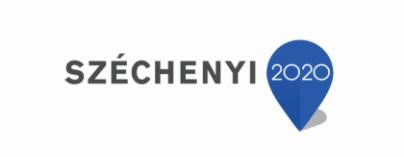
Odborný referát
Listina o podpore: 3023534260
Názov projektu
Využívanie hospodárskych a technologických výhod miestne špecifickej poľnohospodárskej činnosti u kukuričných kultúr za meniacich sa ekologických a ekonomických podmienok
Geografická lokalizácia realizácie projektu
Západné Maďarsko (Győr-Moson-Sopron), Južné Zadunajsko (Tolna), Južná nížina (Csongrád), (región, župa)
Vedúci konzorcia – vedúci projektu podľa konzorčnej dohody
| Vedúci konzorcia | Typ člena |
| Agrofil-SZMI Kft. | výskumné miesto, vedúci konzorcia |
Zastihnuteľnosť členov operatívnej skupiny
| Člen konzorcia | Typ člena |
| Agrofil-SZMI Kft. | výskumné miesto, vedúci konzorcia, vedúci projektu |
| Vásárhelyi Róna Kft. | poľnohospodársky producent |
| Hartai Gazdák Szövetkezete | producentská skupina |
| Kövécs Kft. | poľnohospodársky producent |
| Kövécs Tamás | poľnohospodársky producent |
| Cseke László | poľnohospodársky producent |
| Bonta Kft. | poľnohospodársky producent |
| Ifj. Németh Gergely | poľnohospodársky producent |
| Lajos Katalin | poľnohospodársky producent |
| Dr. Szabados Tamás PhD | poradca |
Kľúčové slová
doplňovanie živín a hospodárenie so živinami, precízne cielené hospodárenie, lokálne špecifické hospodárenie, agrárna informatika, rastlinná výroba na ornej pôde
Trvanie projektu
01.07.2019-30.09.2023
Hlavný zdroj financovanie projektu
Vidékfejlesztési Program (Program rozvoja vidieka), vlastné zdroje
Celkový rozpočet projektu
657 433 tisíc forintov
Cieľ projektu
Cieľom projektu je vytvorenie systému podpory rozhodovania, ktorý počas činnosti rastlinnej výroby umožňuje optimalizáciu využívanie inputových materiálov, podľa možnosti ich zníženie.
Krátke zhrnutie pre účastníkov z praxe
Výnosy z hospodárenia, za ktoré pracujú a poľnohospodári, nech ide o ktorýkoľvek sektor a ktorékoľvek odvetvie poľnohospodárstva, sú rozdielom príjmov a výdavkov. Príjmy sú určené vyprodukovaným množstvom resp. jednotkovou cenou daného produktu, výdavky sú určené množstvom použitých zdrojov pri hospodárení a ich jednotkovou cenou. Poľnohospodári v prípade plodov z ornej pôdy nemôžu významnejšie ovplyvňovať ani ceny inputových materiálov, ani ceny vyprodukovaných produktov, preto svoju ziskovosť môžu zlepšiť optimalizáciou použitých inputových materiálov. V našom projekte sa zameriavame na okruh problematiky optimalizácie množstva inputových materiálov, prostredníctvom systému prostriedkov lokálne špecifického hospodárenia.
2. MÍĽA
Ku koncu 2. míle sme vykonali skenovanie pôdy na všetkých experimentálnych tabuliach, ktorým sme nasnímali nemenné vlastnosti pôdy a určili sme, zachytili sme algoritmy inputových údajov o kultivácii, doplňovaní živín, nastavenia počtu stoniek charakteristické pre danú pôdu.
U 8 hlavných členov – poľnohospodárskych producentov sme nastavili u kukuríc a u slnečníc experimenty vzťahujúce sa na počet stoniek a doplňovanie živín, resp. na základe údajov skenovania pôdy sme nastavili experimenty kultivácie pôdy v záujme vypracovania metodiky pre stanovenie vhodnej kultivačnej hĺbky špecifickej pre danú lokalitu. Už každý člen konzorcia disponuje so zariadením vhodným pre lokálne špecifické hospodárenie, zakúpili si chýbajúce kusy počas prvého míľnika. Údaje, ktoré z toho pochádzali, sme zachytávali s frekvenciou charakteristickou pre daný druh práce, avšak najmenej 1-krát týždenne. Analyzovali sme ich formát, resp. skúmali sme, že akým spôsobom je možné ich spracovávať, premeniť na informácie,
Organizovali sme konferencie (na 4 miestach, v 4 termínoch) v záujme zdieľania nazberaných skúseností, poznatkov.
U každého člena sa podarilo zachytiť údaje o spotrebe paliva v experimentov obrábania pôdy s rozličnou hĺbkou, vyznačiť plochy k údajom zberu úrody. V prípade pokusov nastavenia doplňovania živín, nastavenia počtu stoniek u slnečnicových a kukuričných kultúr sa čaká na zber úrody. Podľa predpokladov zber úrody v októbri a novembri sa uskutoční aj na posledných parcelách, a tieto výsledky budú následne spracované.
Prostriedky na zdieľanie výsledkov projektu podľa komunikačného projektu
Inovačný projekt sme pridali na domovskú stránku EIP-AGRI Service Point. Zorganizovali sme konferenciu.
Püski, 14.10.2021


